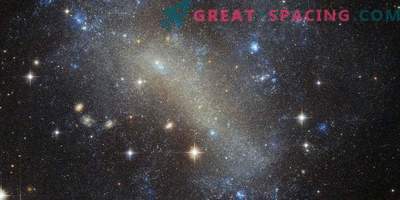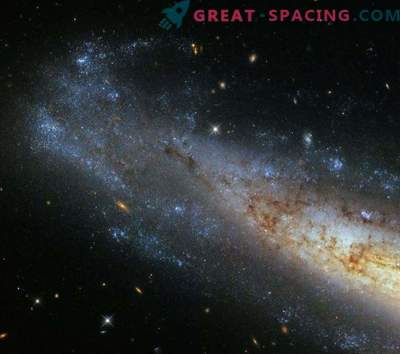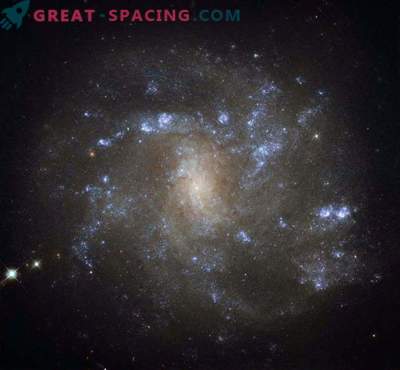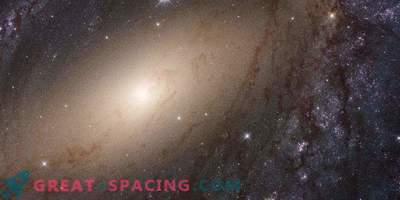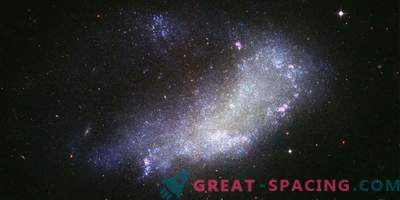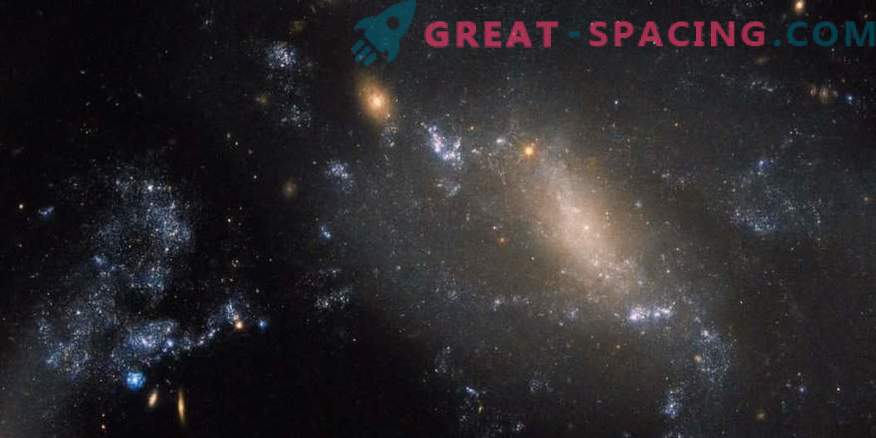
There are galaxies that are much more difficult to classify than others. Hubble's powerful Wide Field Camera 3 (WFC3) spotted two interacting galaxies, 60 million light-years distant in the constellation Leo. The blurred and spotted blue glow (on the right side) is NGC 3447, most often NGC 3447B, because the former identifies a duet. The smaller cluster (in the left corner) is NGC 3447A.
The main problem of outer space is that it is really unrealistically huge. For hundreds of years astronomers have discovered and named galaxies, stars, cosmic clouds and other objects. Combining and organizing such a quantity is a long and laborious process, especially when you have an ambiguous copy that does not intend to comply with generally accepted criteria. It is now known that NGC 3447 consists of several interacting galaxies. But there is no certainty about what they looked like before the process of separation began. They are located so closely that a strong influence occurs that distorts the gravitational force. Because of this, they began to curl into unique shapes. Apparently, NGC 3447A is the remnants of the central structure of the “bar”, as well as the destroyed spiral arms, which is typical of some types of spiral galaxies. Some identify NGC 3447B as a former spiral galaxy, while others identify an irregular one.
